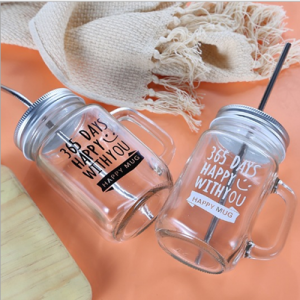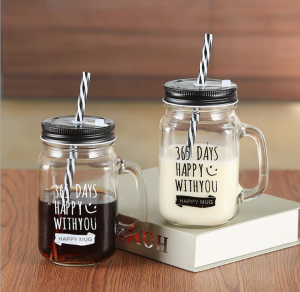First of all, the mold must be designed and manufactured. The glass material is made of quartz sand as the main raw material, and other auxiliary materials are melted into a liquid at high temperature, and then injected into the mold, cooled, cut, and tempered to form a glass bottle. Pickle bottles and glass bottles generally have rigidity signs, and the signs are also made of mold shapes. According to the manufacturing method, the molding of glass bottles can be divided into three types: manual blowing, mechanical blowing and extrusion molding. Glass bottles can be divided into the following types according to their composition: one is soda glass, the other is lead glass, and the third is borosilicate glass.
The main raw materials of glass bottles are natural ore, quartz stone, caustic soda, limestone and so on. The glass bottle has a high degree of transparency and corrosion resistance, and the material properties will not change in contact with most chemicals. The manufacturing process is simple, the shape is free and changeable, the hardness is large, heat-resistant, clean, easy to clean, and can be used repeatedly. As packaging materials, glass bottles are mainly used for food, oil, wine, beverages, condiments, cosmetics and liquid chemical products, etc., with a wide range of uses. However, glass bottles also have their disadvantages, such as large weight, high transportation and storage costs, and not impact resistance.
Use characteristics and types of glass bottles: Glass bottles are the main packaging containers for pickle bottles in the food, medicine, and chemical industries. They have good chemical stability; easy to seal, good airtightness, and transparency, and the condition of the contents can be observed from the outside; good storage performance; smooth surface, easy to disinfect and sterilize; beautiful appearance, colorful decoration; certain machinery Strength, can withstand the pressure in the bottle and external force during transportation; the advantages of wide distribution of raw materials and low price. Its shortcomings are high quality (large ratio of mass to capacity), high brittleness, and fragility. However, in recent years, the use of new technologies such as thin-walled light weight and physical and chemical tempering has significantly improved these shortcomings. Therefore, glass bottles can compete with plastics, iron cans, and cans, and the output has increased year by year.
There are many varieties of glass bottles, from small bottles with a capacity of 1ML to large bottles of more than ten liters, from round, square, to special-shaped and handle bottles, from colorless and transparent amber, green, blue, black shading bottles and opaque The opalescent glass bottles, etc., are too numerous to mention. In terms of manufacturing process, glass bottles are generally divided into two categories: molded bottles (using model bottles) and control bottles (using glass control bottles). Molded bottles are divided into two types: large mouth bottles (bottle mouth diameter above 30mm) and small mouth bottles. The former is used to hold powder, block and paste-like objects, and the latter is used to hold liquids. According to the form of the bottle mouth, it is divided into cork bottle mouth, screw bottle mouth, crown cap bottle mouth, rolling bottle mouth frosted bottle mouth, etc. According to the usage, it is divided into “one-time bottles” that are discarded after use once and “recycled bottles” that are used in multiple cycles. According to the classification of the contents, it can be divided into pickle bottles, wine bottles, beverage bottles, oil bottles, canned bottles, acid bottles, medicine bottles, reagent bottles, infusion bottles, cosmetic bottles and so on.




























